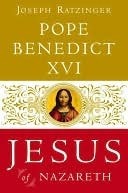More on this book
Community
Kindle Notes & Highlights
Read between
February 12 - March 14, 2016
Are not the oases of creation that sprang up, say, around the Benedictine monasteries in the West foreshadowings of this reconciliation of creation brought about by the children of God—just as, conversely, something like Chernobyl is a shocking expression of creation’s enslavement in the darkness of God’s absence?
“Woe to you who are rich…. Woe to you who are full now…. Woe to you who laugh now…. Woe to you when all men praise you” (Lk 6:24–26).
“What has been the greatest sin on earth so far? Surely the words of the man who said ‘Woe to those who laugh now’?” And, against Christ’s promises, he says that we don’t want the Kingdom of heaven. “We’ve become grown men, and so we want the kingdom of earth.”
The proper interplay of Old and New Testaments was and is constitutive for the Church. In his discourses after the Resurrection, Jesus insists that he can be understood only in the context of “the Law and the Prophets” and that his community can live only in this properly understood context. From the beginning, the Church has been, and always will be, exposed to two opposite dangers on this score: on one hand a false legalism of the sort Paul fought against, which throughout history has unfortunately been given the unhappy name of “Judaizing,” and on the other hand a repudiation of Moses and
...more
Although this use of language derived from man’s bodiliness inscribes motherly love into the image of God, it is nonetheless also true that God is never named or addressed as mother, either in the Old or in the New Testament. “Mother” in the Bible is an image but not a title for God.
These deities always, and probably inevitably, imply some form of pantheism in which the difference between Creator and creature disappears. Looked at in these terms, the being of things and of people cannot help looking like an emanation from the maternal womb of being, which, in entering time, takes shape in the multiplicity of existing things.
The Decalogue is not, as we have seen, some burden imposed upon man from the outside. It is a revelation of the essence of God himself—to the extent that we are capable of receiving it—and hence it is an exegesis of the truth of our being. The notes of our existence are deciphered for us so that we can read them and translate them into life. God’s will flows from his being and therefore guides us into the truth of our being, liberating us from self-destruction through falsehood.
The demand for signs, the demand for more evidence of Revelation, is an issue that runs through the entire Gospel. Abraham’s answer—like Jesus’ answer to his contemporaries’ demand for signs in other contexts—is clear: If people do not believe the word of Scripture, then they will not believe someone coming from the next world either. The highest truths cannot be forced into the type of empirical evidence that only applies to material reality.


